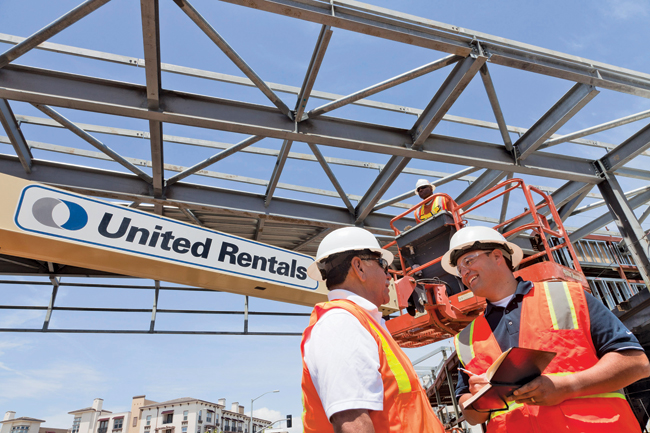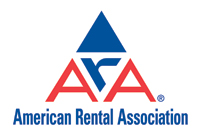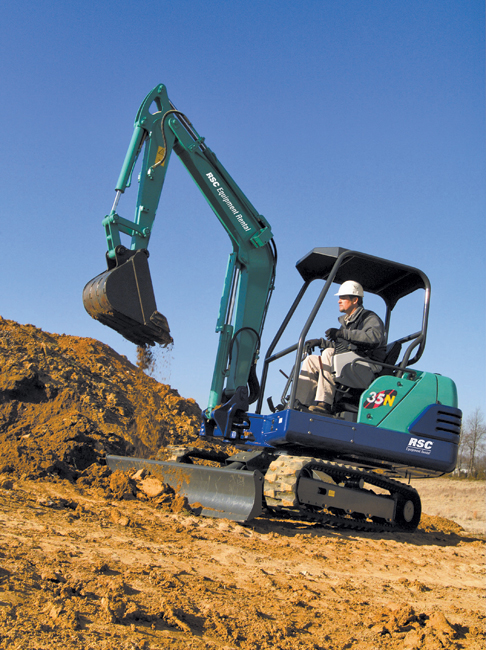The Big Rental Shift
In 2011, the equipment rental industry outperformed the industries it serves, and expectations are that the momentum will continue as the benefits of renting equipment are magnified in today’s marketplace. Many equipment rental companies, including United Rentals, Greenwich, Conn., the world’s largest equipment rental company, are seeing a “secular shift” in North America as customers including contractors, construction businesses and homeowners recognize the advantages of the fixed cost of renting, which also covers maintenance, storage, delivery and more.

“It is hard to estimate the secular shift, but we do believe that the recipe is there,” says Michael Kneeland, president and CEO of United Rentals. “Credit markets are tighter. There is customer uncertainty and the benefits of rental are real with the services you provide. To the extent you can do that more will only drive the business.”
Overall, IHS Global Insight, the respected economic forecasting firm based in Lexington, Mass., is projecting total rental revenue in North America to grow by 5.2 percent in 2012 to reach nearly $30 billion, including each of the three segments of the industry — construction and industrial, general tool and party and event.
“In the long run, total rental revenue in North America is expected to continue its expansion, reaching $45.9 billion in 2015,” IHS Global Insight states in its November 2011 update to the ARA Rental Market Monitor, a subscription-only service made available by the American Rental Association (ARA) and Rental Management to ARA members. “During 2011-2015, total rental revenue is projected to grow 10.3 percent on a compound annual growth rate [CAGR] basis. Growth in the United States is projected to outpace Canada in the long run. U.S. total rental revenue is expected to expand at a CAGR of 10.9 percent from 2011 to 2015, compared to a 3.1 percent CAGR for Canada during the same period,” according to the North American rental market analysis from the ARA Rental Market Monitor.
Short-term, however, there are some in the industry who believe the equipment rental industry has the potential to further outperform the general economy and go beyond IHS Global Insight’s current forecast. Dan Kaplan, a rental expert and founder of Daniel Kaplan Associates, Morristown, N.J., says he expects the equipment rental industry revenue growth in 2012 to outpace the forecast by IHS Global Insight because rental penetration has grown to as much as 45 percent this year and could be greater next year.

Scott Hazelton, a senior partner with IHS Global Insight who has been following the fortunes of the equipment rental industry with ARA for several years now, agrees with Kaplan’s assessment that greater growth for rental revenue is possible.
“The only way to grow faster than underlying industry conditions is to gain share from competing options. In the case of the rental industry, this means converting contractors, industrial facilities and other potential customers from owning their own fleet to renting equipment. Indeed, this is how the rental equipment industry has managed to grow in 2011, while the underlying marketplace has been soft,” Hazelton says.
“As new customers learn that a rented fleet saves them maintenance and repair costs, arrives at the jobsite on time, has great service, eliminates storage hassles and generally makes their life easier, then when the economy improves and they need to make a decision on adding equipment, they will decide to rent more rather than revert to buying their own fleet,” he says.
Christine Wehrman, ARA’s executive vice president and CEO, also sees the coming year as one that should benefit the equipment rental industry. “There is a real opportunity for rental businesses in this industry to gain market share by aggressively selling the value of equipment rental at this point in the economic recovery,” Wehrman says. “We’re a solution-based industry that provides services through the nature of what we do in equipment rental that is immediate. It solves immediate issues and provides solutions when people are dealing with capital availability and downsizing of fleet due to economic reasons.
“It is our time, as an industry, to help our customer base succeed in their businesses. We are that catalyst in helping the economy grow back and helping businesses to recover, employ people and strengthen the economy, whether it is in the United States, Canada or globally,” she says.
Another factor today, Kaplan says, is that major rental companies are growing their fleets with increases in excess of 11 percent in 2011 and likely fleet growth of another 5 to 10 percent to 2012. “Fleet age of the major rental companies will be coming down and customers prefer newer equipment, so I remain very optimistic for 2012,” Kaplan says.
According to the ARA Rental Market Monitor, growth in rental revenue for construction and industrial equipment is forecast to accelerate in 2012 and 2013 as the rebound in the construction market takes hold.
“The recovery in the construction markets will push up construction employment, which is forecast to start seeing some positive growth, 0.4 percent on a year-on-year basis, in 2013. As a result of the gradually active construction activities, overall rental revenue in the construction and industrial equipment segment is forecast to reach an annual growth rate of 18.9 percent in 2015, which equates to $29.4 billion of revenue in that particular segment that year, well above the segment’s 2007 revenue peak of $25.4 billion,” the ARA Rental Market Monitor states.

Also, general tool rental revenues were expected to show a 3.7 percent increase in 2011 and is forecast to grow at a rate of about 5 percent in 2012. To maintain momentum into 2012 and beyond, Kaplan says rental companies need to continue to improve the efficiency of their operations.
“For instance, companies should look at how much time it takes to deliver a piece of equipment, how much time it takes to pick up a piece of equipment when called off rent and how long to get it from the shop,” he says. “If a company can improve on these operations, it effectively winds up with more available fleet and more fleet equals more revenue. Many have improved their operations quite a bit. Now they have to go from where they are to the next stage, and the bigger rental companies have programs to accomplish that.”
Wayne Walley is the editor of Rental Management magazine, based in Moline, Ill.
